Authors: Brenthos and Mich_TATEJlb (EU server)
Part 1 – here
Please read part 1 if you haven’t before, especially for the background of the article.
Magach 3 – M48A3 Patton with the L7 installed. This model did not yet received the thermal sleeve on the gun.
Magach 5 – M48A5 Patton with a mine clearing device developed in IMI (Israeli Military Industry).
Magach M60A1, with the L7 and basic reactive armor.
It is now known, that the Soviets were the first to introduce reactive armor on their vehicles, but they could really perfect it only after receiving samples of such armor from the Syrians, who had captured an Israeli Magach.
Magach 7 gimel – M60A1 Patton.
This model had its reactive armor removed, and instead, new layers of regular armor were fitted on the front plate and the turret. Side skirts (in Hebrew they call them ‘bazooka plates’) were also added. Notice the smaller commander’s cupola. Those were the last tanks in service, serving in reserve units, until removed about half a year ago (January 2014). The remaining tanks are to be dismantled and re-processed for re-use of the steel.
This was the first Magach to cross the Suez Canal on the Yom-Kippur War (dozer blade added later). The Barrel/Roller Bridge is also original – was used to cross the canal.
The Israeli Dictators
During the Six-Day and Yom Kippur wars Israel captured close to a thousand of T-54/55 and some T-62 from Egypt and Syrian armies, large portion of which were completely unharmed.
In Israeli service, they have received the name “Tiran”. The name was chosen from 3 reasons: Tiran in Hebrew is a dictator (as in tyrant), and the tanks were USSR made – reminding of Stalin; the blockade of the Straits of Tiran was one of Egypt’s first acts of war prior to the Six Day war; and the first letter of Tiran is “T”, marking those tanks.
The models were designated as 4, 5, and 6. There were actually bit more, like 4sh and 5sh, but we will discuss only the mass production lines:
Tiran 4
Based on the T-54. Changes were made to the communication equipment and the machineguns were changed to Browning’s 0.3 and 0.5 cal. Visually it was the same T-54 with some equipment baskets on the turret sides, the main purpose of which was to change the tank’s silhouette a bit, so IDF would know that this is one of their tanks.
Tiran 4 – a plain T54 with equipment baskets fitted on the turret.
Tiran 5
Based on the T-55. In the same manner as with Tiran 4, baskets were attached to the turret.
The interesting part is the gun. It was decided to change the D-10 to an American L68 (which is a licensed version of the British L7). The problem was that traditionally in Soviet tanks the loader was on the right side of the gun so the breech was opened to the left, which is opposite to the American school. That created the problem that if the gun to be changed to L68, the whole crew arrangement was to be changed. That kind of endeavor was deemed as not necessary. The answer was as simple as it can be related to the fact that the tank is Soviet: The barrel was changed to the American 105mm L68, but the breech was from the original D-10. And, as you would expect from Soviet made machinery – that transformer worked flawlessly.
Tiran 5 – Had the American gun installed instead of its D-10. Some were fitted with dozer blades for engineering purposes.
Brenthos: Note that contradictory to the sources available online, Tirans 4 and 5 did not have their engine replaced. The confusion is probably because of the use of American engines on the Achzarit APC (mentioned later), and the T-62s. It is also possible, that modification of those tanks, with replaced engines were later sold to other countries.
Tiran 6
This was the T-62 with an American diesel engine. The main purpose of the engine switch was more to a matter of standardization, than to enhance the tank’s capabilities. The gun was the original smoothbore 115mm.
Tiran 6 – Note the US-made MG mounted on the turret.
Probably, the most important modification was made to all Soviet produced vehicles, was the removal of the crew heater. In the Tirans, it made place for 2 more rounds of main gun ammunition, which was significant, according to the Israeli crews. The crew heater installed in some of the T-54s, could not be turned off, and heated the crew compartment as long as the tank was running. Israeli reconnaissance records prior to the Six-Days War, noted that Egyptian T-54 crew members never stayed inside the tank when it was stopped, even if it put them in a position exposed to Israeli fire – they just could not stand the heat. When the tanks were captured – the reason was revealed: Technical documents from Siberia-based USSR units were found in the tanks. Just imagine yourself, sitting inside of a tank heated by Siberia-adjusted heater, in the desert, under the scorching sun, with 45° Celsius outside…
Another interesting fact worth mentioning was the serviceability of the Tirans. We know well that Soviet vehicles are built to be reliable and withstand harsh beating, while Western ones are known to be a bit more maintenance-dependable. The Soviets built the T-54/55/62s, bearing in mind the WW2 concept – a tank should be built so it would not break on the battlefield, but if it does – it will be simply replaced by another one that will arrive from reinforcement. This concept has proven itself very unsuited for smaller countries that could not allow for such big amounts of tanks. And experience shows that T-54/55/62 broke a lot on the battlefield, especially in the desert, and the hard basalt rocky terrain of the Golan Heights. Michael Mass, who worked on T-54/55 for long years, explains: Imagine yourself you need to replace a part of the transmission, or an air filter – on the Tirans, you need to turn the turret so you can access the engine compartment, squeeze yourself inside somehow, and then replace the part without disassembling the whole engine/transmission. Easier said than done. On western tanks – you simply bring a small crane; take out the whole power unit (engine, transmission, etc.), which is installed on a surface that allows quick removal; replace the part outside easily, or simply replace the whole power unit – this can be easily done in the field.
Michael also mentioned the ergonomic problem of the Soviet tanks – they were simply not built for tall men, and even if you were short enough, driving around in the extremely cramped compartment with sharp and hard parts all around you, led to extensive physical exhaustion, and in some cases – permanent muscle damage (sitting squeezed for too long).
In total, Israel had used 444 Tiran tanks in its armored forces lines. Those were assembled in 4 brigades: 691st, 265th and 889th – armed with Tiran 4 and 5s and 320th – armed with the Tiran 6. Those saw service, and one interesting operation shall be noted – operation ‘Dov Lavan’ (White Bear) AKA operation ‘Raviv‘ (Drizzle). In this operation, a group of Tiran 5 tanks, accompanied by captured BTR-50s, have landed on the Egyptian shore of the Suez Bay, and conducted a raid on Egyptian army and Police units, stationed along the shore. The raid lasted for about 10 hours, after which the Israeli forces have returned to the Israeli shore by the same landing crafts that transported them to Egypt. The Tirans were chosen because of two reasons: They were lighter, thus allowing more tanks to be transported at once on the landing crafts; it would be harder for the Egyptians to tell them from their own tanks. During the operation, the force encountered an Egyptian General, the commanding officer of the sector, in his private car. He could not understand what “his” forces were doing, and tried to stop them by waving his hands and screaming at them. He was shot of course. Adding this to the mass destruction done to Egyptian outposts, radar stations and SAM batteries, the operation was considered a great success. The Egyptian forces were so overwhelmed by the consequences; they decided not to pass the news about the raid to the higher command and the state Leader, Gamal Abdel Nasser; the news made their way to the top eventually, and Nasser was so mad, he removed the Army, Navy and Air-force Chiefs of staff, and the Red-Sea Theater CO from their positions. On the next day, Nasser had a heart attack.
BTR-50 that was used by Israeli forces.
The Tirans stayed in service until the beginning of the 1990′s, mostly in reserve units. After that, they were sold to various countries. Another interesting Vehicle based on the T-54/55 developed by Israel, and used until this day, is the Achzarit (Cruel) – a heavy APC.
Up until this day, the Achzarit is one of the main APCs used by Israeli forces.
Other vehicles captured from the Egyptians, on display in Latrun:
T-34-85 captured from Egypt. Apparently, it had some firing incident.
Sherman FL10 – a Sherman hull with an AMX-13 turret.
ISU-152.
Command vehicle based on the ISU-152.
IS-3. Some of those were put on slopped terrain in Sinai, and used as artillery pieces by Israeli forces.
T-100 SPG. A BS-3 (M1944) 100mm gun mounted on a T-34 hull. The installation of such a gun in the original T-34 turret required a lot of modifications made by the Egyptian military industry.
T-54C.
Around 1970, a program to renew the Tirans and keep them in service for a long time was developed. The ‘Samovar’ program, which was revealed in 1984, was declined, and instead, the development of an Israeli-made tank – the Merkava – had started.
The Chariot
The Israeli Merkava MBT, is probably one of the best equipped and certainly one of the most modern Main Battle Tanks in the world, especially when taking into account the fact this tank was designed for tank-versus-tank combat, and later modified to conduct various missions, including Low Intensity Conflict (LIC) engagement, reconnaissance and observation, force incursion/extraction, and a lot more. This is the only tank that has anti-helicopter shells in his arsenal, and the only tank that is built to also be a small APC or rescue vehicle.
Merkava is Hebrew for Chariot, and the source of the name comes from the Bible. Zechariah 6:1: “And I turned, and lifted up mine eyes, and looked, and, behold, there came four chariots out from between two mountains; and the mountains were mountains of brass”. According to Jewish belief, the vision described in Zechariah 6, is the vision of the revival of the Jewish people, and the establishment of their Independence, thus the Chariot was chosen as the name of the first all-Israeli made tank.
The idea of an Israeli made tank was born in the beginning of the 1970′s, when the IDF had finally accepted the fact that the British would not sell the Chieftain to them. There were a lot of doubts on this matter on the Israeli side – many did not want to believe it will not happen, because Israel was involved in the testing of the vehicle and a lot of proposals made by Israeli tankers and engineers were lately implemented in the Iranian Shir 2 version.
The development started with the aim of creating a multirole MBT, which will serve as the main maneuvering force of the IDF land forces, in large numbers. It should be able of both leading an attack while engaging enemy tanks and infantry, and support infantry with long range fire on various targets. But the main emphasis was on crew protection. In the first 10-20 years of the existence of the Israeli state, it has lost more men than it could afford. Only in the Yom-Kippur war, every Jew in Israel had lost at least one relative or friend in battle. The army changed its priorities and almost every military project of those times was aimed at saving the operator’s life, even if it comes at the cost of not letting him engage the enemy.
It was decided to put the engine in the front, so it will be another barrier between the crew and the enemy. The first prototype was as simple as it could be: a Centurion hull was re-fitted – the turret put in the front, the engine was re-positioned a bit and the driver was moved to the rear, beside and behind the engine compartment, facing backwards. The armor was fitted as necessary only for the hull to be fully closed. During the tests, it was driven in reverse gear. Also, the suspension tension adjustment system was different on both sides – one had the Soviet variant, and the other one – the western one. Which was better – also was tested on trials. Here are some pictures of the prototype, still on display in Latrun:
The years have passed, and Israeli wars become less conventional. The tasks of the tank have changed, and now it was required to withstand guerilla warfare, provide reconnaissance and cover for commando forces, and still maintain its standard capabilities. This led to extensive changes and upgrades made to the tank and to development of various modules and systems that can be easily mounted and dismantled according to the tank’s mission.
Since the Merkava is still in service today, a lot of its features are still classified, mostly the construction, thickness and composition of its armor. Here is a table presented on the Yad LaShiryon official website (in Hebrew, translated by the writers). It actually differs from the one on Wikipedia, adds to it and looks more reliable:
As you can see, some of those descriptions do not give away a lot of information. So, let us have a look at the tanks themselves:
Merkava Mk1. Note that this tank is “naked” – has no additional modular armor on it.
Merkava Mk2. The equipment baskets and the hanging chains act as anti-HEAT protection.
Merkava Mk3.
Merkava Mk4.
Note several things: The frontal armor upper plate looks flat, there is no engine bulge – this is not a different hull design, it is all modular armor plates. The turret looks way different from the other ones – this again, is modular armor. Hull and turret basic design outline were almost not changed from the Mk1 version.
Namer Heavy APC.
This is an APC based on the Merkava Mk4 hull, with extensive modular protection, and a remotely controlled weapon station that mounts a 0.5 cal. The unique suspension can be seen here: Coil springs mounted on the torsion bars, combined with hydraulic restrainers. The ‘bazooka plates’ are made of (assumingly) reactive armor plates, about 20-25mm thick. Namer is Hebrew for Leopard, but also an abbreviation of NaGMash Merkava – NaGMash in its turn, is an abbreviation of Noseh Geisot Meshuryan (Hebrew for APC). It is a strange custom in the Israeli military to abbreviate abbreviations, just to make them form a common word.
Other vehicles in Latrun
The exposition in Latrun includes some other vehicles. Some of them were captured by the Israeli forces in one of the many local conflicts, some were donated to the collections by other collectors or organizations, and some were traded for Israeli vehicles. Let’s have a look at those:
Panzer IV ausf G, captured from the Syrian army on the Golan Heights in 1967. The Syrians have received those from the Soviets, who captured it from Nazi Germany in WW2.
(SS: no, they did not, those are refitted Czechoslovak Panzer IV’s – Czechoslovakia used all kinds of wartime German junk a few years after the war. In the 50′s, it was gradually replaced by license-produced Soviet vehicles and sold off to third world countries)
Stug III, went the same way as the Pz. IV.
(SS: nope – again, part of them was Czechoslovak, the other part was – oddly enough – from Spain)
M47E1/E2 Patton tank.
The Spanish ‘Talbot’ company upgraded those, equipping them with the engine and transmission of the M48 Pattons. The E2 also had its barrel replaced with the 105mm. Over 400 vehicles of this type are in service in the Spanish Army. The one on the left was captured from Syria, and the one on the right – from Jordan.
A Churchill, received as part of a trade with a British collector.
M3 Grant
M3 Lee
M3A1 Stuart.
M5A1 Stuart.
M551 Sheridan.
This one was received from surplus of the US upon request from Michael Mass. He told us, the US was throwing those to the sea from aircraft carriers and he managed to get in touch with the Americans and ask for one. So, someone misspelled ‘Israel’ – note the writing on the front plate – ‘Hold for isreal’
M41A3 Walker Bulldog.
Took part in the Civil War in Lebanon in 1975.
M42 Duster.
M24 Chaffee
Matilda
A Charioteer Tank, captured from the terrorist forces in south Lebanon in 1978.
A ZSU-23-4 Shilka, captured from the Syrian army.
A ZSU-57-2, captured from the Egyptian army.
M901 with TOW launchers installed. Based on the M113A2 hull. Currently in service of the Egyptian and Jordanian armies.
FV603 Saracen.
Leopard 1.
Chieftain Mk3.
This is not one of two received for testing in Israel – those were returned to the UK.
Swiss made Panzer 1961.
M52 SPG, captured from the Jordanian forces in the Six-Day War.
M107 SPG. Those SPGs, armed with 175mm funs, were purchased by the IDF in the beginning of the 1970′s.
A captured Syrian T-62. This is some lucky shot!
To conclude this piece of writing, we would like to express our feelings on the subject, after the visit.
We came as enthusiasts, and went as happy ones, knowing a lot more. We spoke to a man who is, just like us, likes tanks a lot, and does it for living. We saw a lot of pieces of great engineering that were designed and built to kill and destroy. This may be worn out, and said a lot of times before, but it is hard not to mention it: It is such a shame men waste their lives and talent on such machines. Yes, they impress us very much, and if not wars, we would not have them. But when we turn on the news, two days after our visit, and see the footage of an armor officer getting killed by a sniper shot while engaging terrorists from his MG, and the footage of Merkava Mk4 tank firing at a school where terrorists are firing their rockets from, hearing about the innocent lives taken away by war… It is hard to really like those tanks. And we are not even talking about Ukraine – the country where one of us was born.
And yet, they are beautiful, impressive, petrifying.
Let’s hope, the only tanks we will ever get to use in combat – will be digital ones.
Bibliography: spoken and written material received from Michael Mass in Hebrew, Hebrew Wikipedia (only articles confirmed by printed sources), and description signs in Yad Lashir’yon in Latrun.
Written by Brenthos and Mich_TATEJlb (WoT EU Server).
P.S: If you want to visit Latrun, do it in the winter. It is too damn hot there under the sky in the summer.












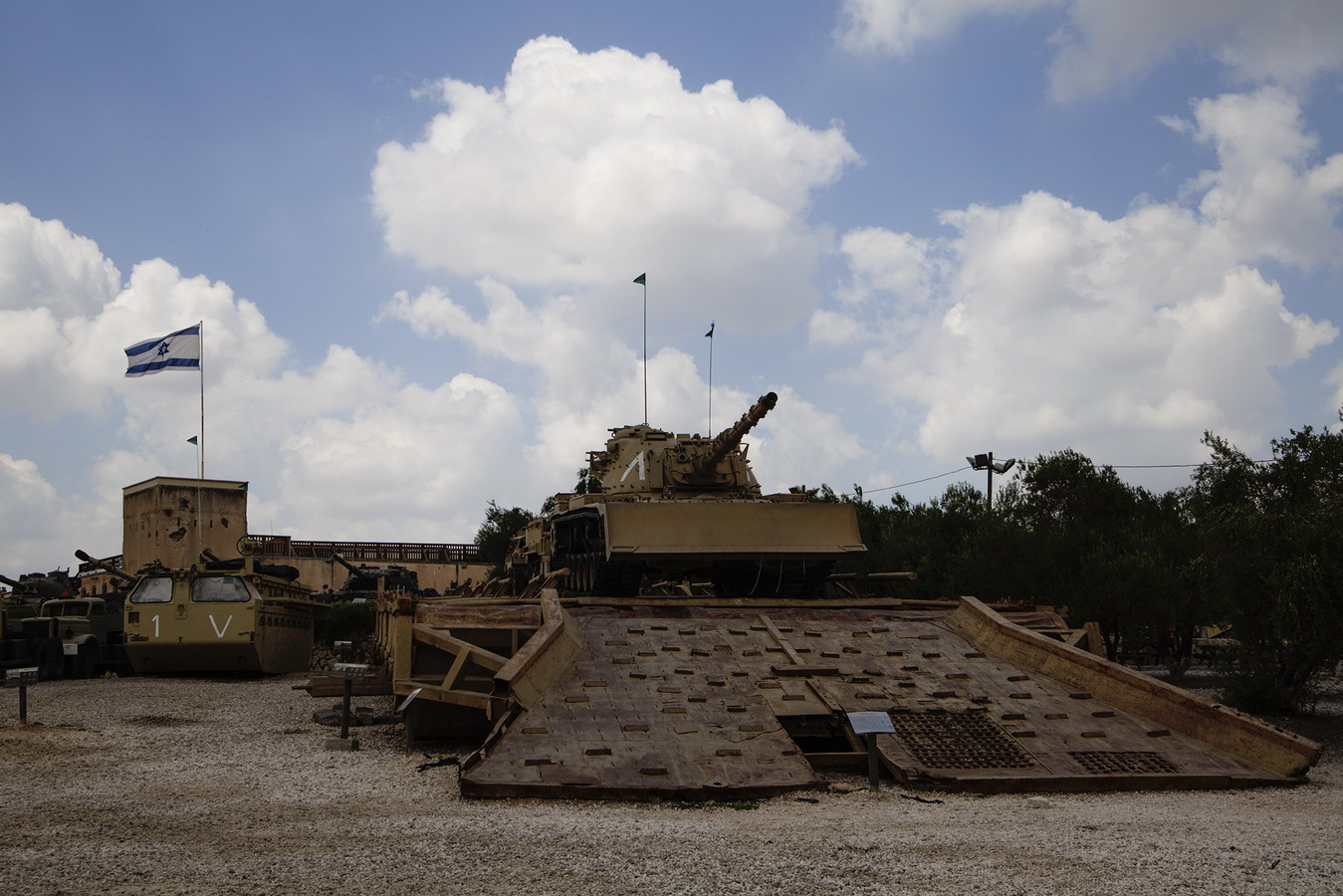






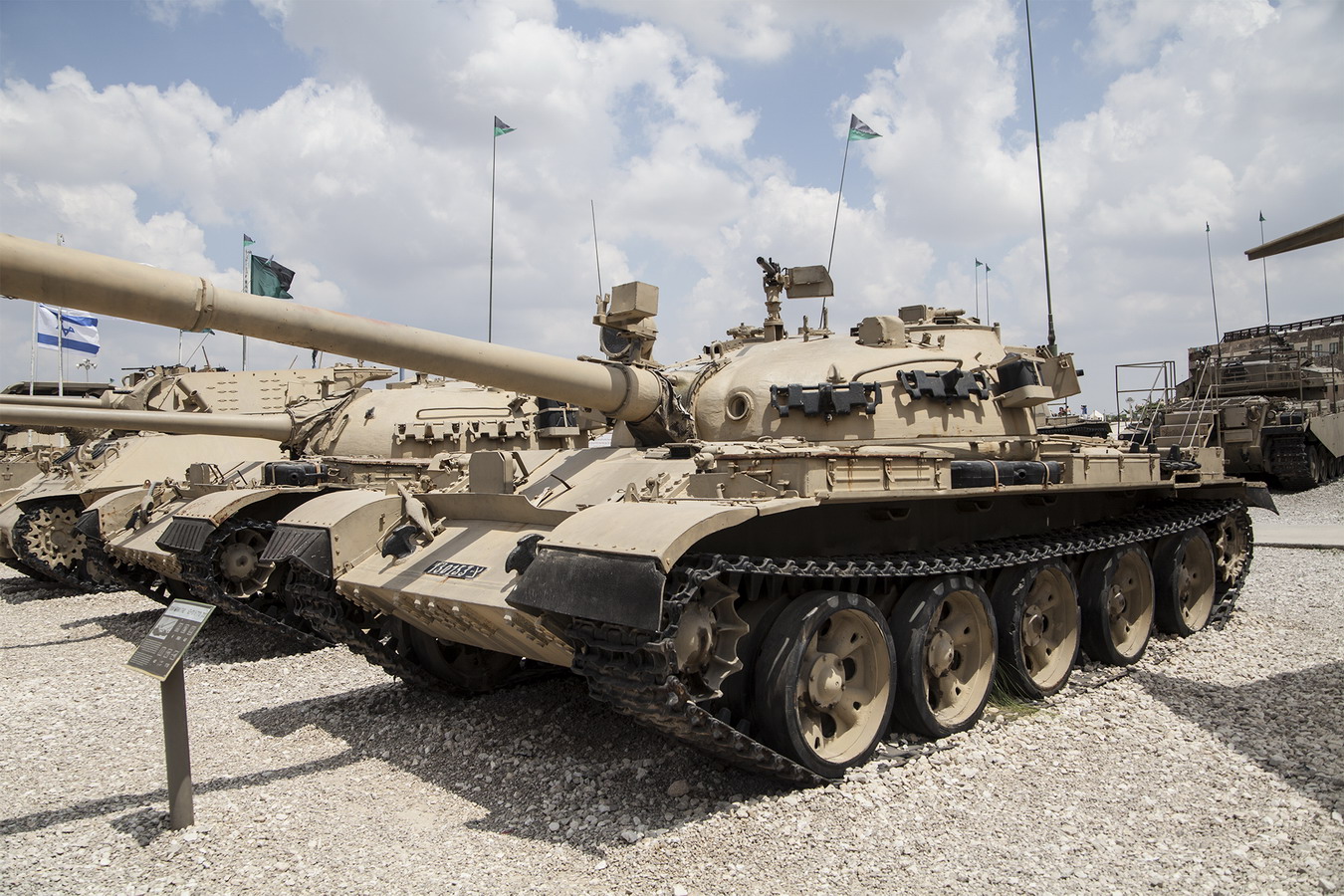








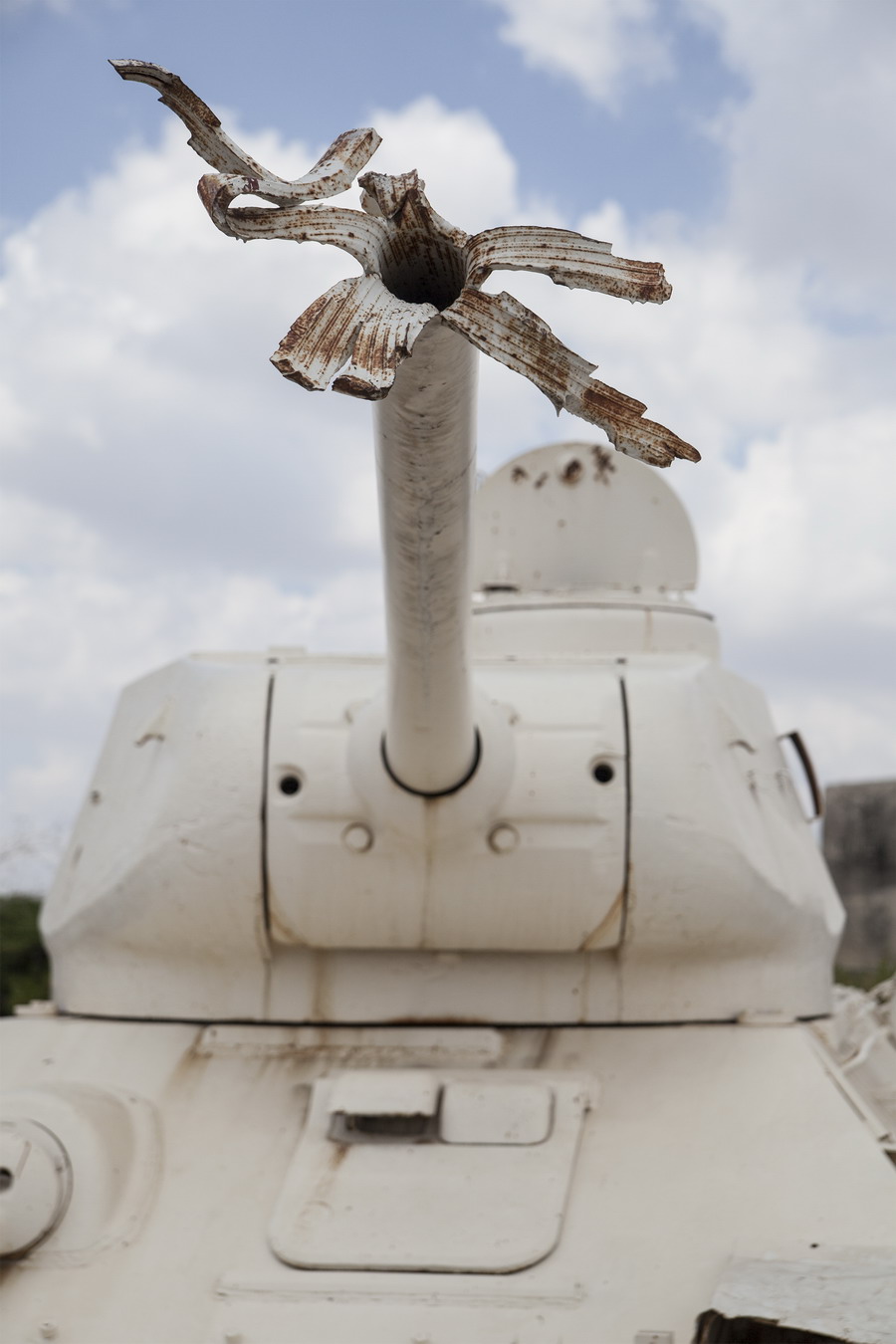




















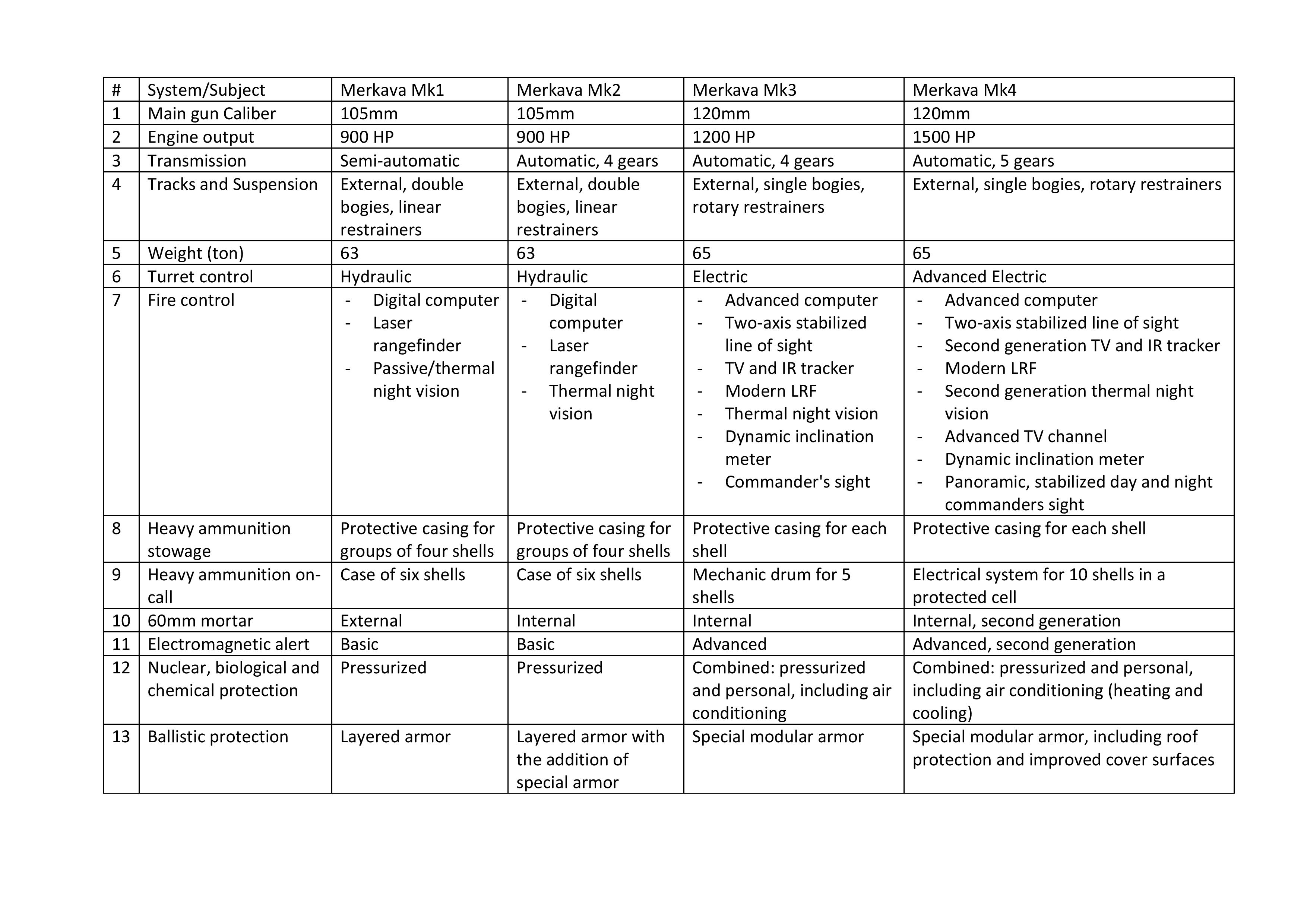































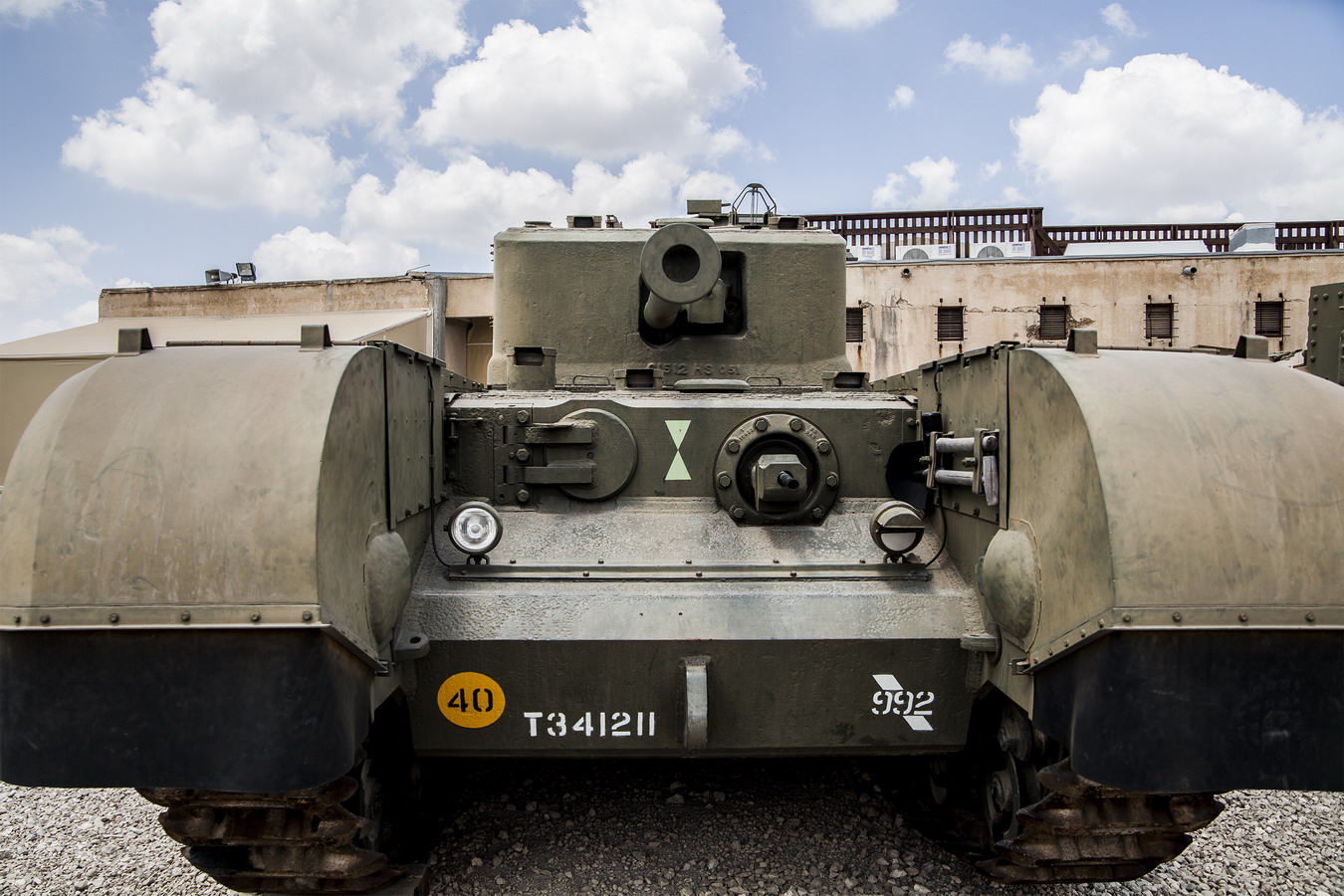



















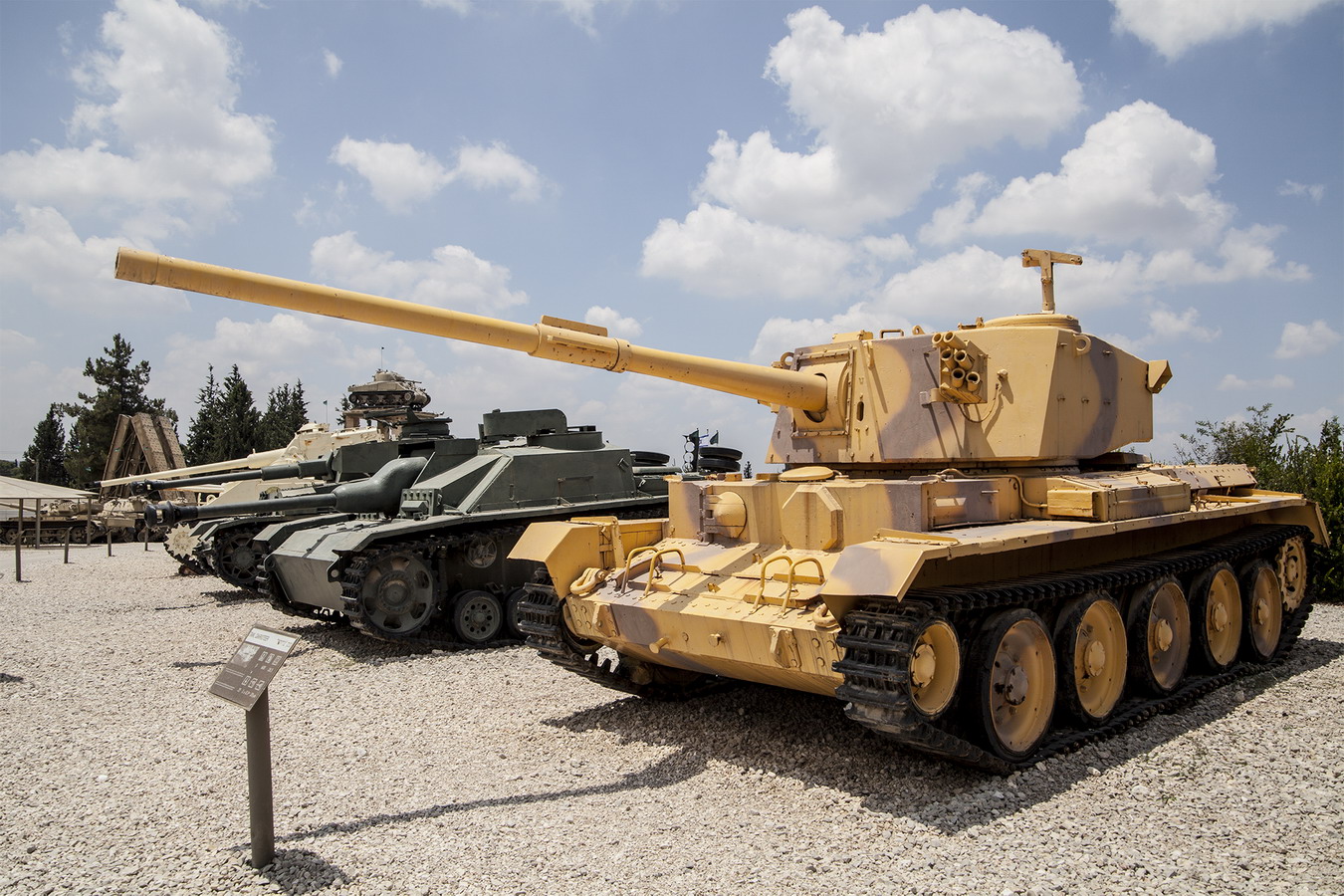




















Awesome SS! GJ!
“M107 SPG. Those SPGs, armed with 175mm funs–”
In game people get mad even if I’m shooting fun or love shells :(
nice articles!
Those Merkavas are among the sexiest tanks ever build.
Merkava +-+
“Browning’s 0.3 and 0.5 cal.”
It’s 30.cal (7,62 mm) and 50. cal (12,7 mm) , isn’t it ?
Depends on you geographical location.
In US they usually use 50 (without a dot), In EU (and in Israel) they mark .50 (with a dot).
Anyway those are exactly the same. It’s like 9mm called Parabellum, or Luger, Or just 9mm.
I didn’t want to add the exact models of the machine-guns cause there were a whole load of them, usually Browning 1917 and M2HB, but also FN MAGs and even some German MG-42.
Didnt know that, thank You for an Information and nice article too :-)
I’ve sen 50 Cal and .50 Cal before, but this is a first for 0.5 Cal. It looks strange, like half a caliber.
It’s .50 cal (0.5 inches == 12.7mm)
The Magach 7 gimel should be a vanilla M60, its turret rear is shorter.
http://files.militarybox.cz/200001907-5736558305/Magach-7.wi.Bukvoed.CC%20BY-SA_2.jpg
http://www.geocities.jp/fortonextjp2000/magach7c/magach7cm001.JPG
Wow that is a huge collection. So many captured tanks!
That Sherman with an AMX 13 turret looks like it could be a nice (american?) premium.
Nice post.
I was hoping it could be a French tank. The American tree is already much larger than its French equivalent.
Hey with the Merkavas why is there a gradual up armouring of the turret from Mk3 and onwards there is additional armour added to cover the turret ring is there a reason for this?
did they intentionally want to tank turret to have a small profile?
AFAIK the Merkava was designed mainly for urban combat and crew protection was with the highest priority.
True, and not true. Initially, it was designed as an MBT, solely. From late Mk.2 and Mk.3 the need for employment in urban warfare arose, and were implemented in all marks.
As we wrote, crew protection was first priority from the beginning, because the army was really afraid of the situation, where you have enough functioning (including repaired or repairable) tanks, but not enough crewmen in the whole military (including reservists) to operate them.
ATGM’s and RPG’s. Bane of the Merkava’s.
They wanted the tank to be immune against RPG-7′s and ATGM’s like Konkurs, but in the end, irregulars from Gaza Strip used them with succession.
The Hisbollah also has access to much more modern, deadlier equipment.
As others wrote, the reason is ATGMs mostly. But the modular armor can also be fitted on the early models. For example, Some of the tanks they use right now in Gaza Strip are Mk. 2, with the modular protection of the Mk.4.
Btw {AND PLESE TRY NOT TO GET POLITICAL ON THIS}, if you go to the Hammas official website, you can see fresh vids of Malyutka (Sagger), Konkurs, and even Korner ATGMs (at least, this is what they state them to be) being fired at Merkavas – without success.
But, there is one thing they have that the tanks in the museum does not – the Trophy (“Meil Ruach” – hebrew for Rain Coat) system – http://en.wikipedia.org/wiki/Trophy_%28countermeasure%29.
T-54 with L7, now that would be one OP tier 10 medium in WoT!
except it has only 100mm front armour, So worst than T-62A
T-62A has 100mm frontal armor as well…
Plus I prefer mobility + gun than armor, especially on medium tanks.
“Merkava Mk1. Note that this tank is “naked”….something…, something else…”
Sigh, unzip…
Regarding the Tiran 5 portion of the article, shouldn’t that be M68? Because the American licensed version of the L7 was designated the M68, not the L68.
Also, I agree with the last line of the article: “Let’s hope, the only tanks we will ever get to use in combat – will be digital ones.” Couldn’t have said it better.
Yep, My mistake, it is M68.
BTW the Israeli name of this gun is “Sharir”.
Merkavas and that Namer are such sexy futuristic looking tanks. also the sherman with the AMX 13 turret is interesting.
This is the reason I come back to FTR everyday, what an excellent read and pictures, thanks so much guys!
And I got my Merkava’s, what a beautiful machine! I want one!
Seeing that tiny M52′s gun and comparing it to what we have ingame as M53/55 made me laught so hard :D
Excellent article. Keep at it. Early and proto Merkava is a bit of a blackhole when it comes to articles and books.
This was most impressive. I hope that WG can make a lot of new tanks from these photos. 85% of them (or so) I would love to play in game. It would add some new levels and depths to the game. I mean more variables in tanks means a more complex and fun match to play.
Eg- M4 Sherman, okay, so armor is weak here and here, such and such gun. -
Israel M4 Sherman, They buffed the armor to protect crews, meaning they need a lighter (smaller) gun. So you get a M4 with more armor/HP, but a smaller cal, faster reload. That adds a whole new layer of depth. Maybe even slower because of the extra frontal armor and so on.
I think its a great way to keep players intrigued. It gets boring fighting the SAME tank that you have to shoot in the same part over and over. “Oh look, have to shoot his lower glacis, or look, can only shoot the hatch on this one”.
Add lots of new tanks or new maps more frequently.
Nice Article SS and gj for giving us this info, and also thanks to contributors of this article, Brenthos and Mich_TATEJlb, thanks for sharing it.
Those Israel-is? -ites? are good on doing experiments on tanks, it’s like they can see those tanks as lego pieces and able to mix and match and stuck everything together.
Aaah the typical soviet design – make the main stats on paper look competitive but make the tank a living hell for the crew. “Fuck people, especially our own ones”. Stronk. Not.
Bravo on this pair of beautiful articles. and also on the articles on swedish tanks. Very high quality stuff here! I appreciate this blog more and more each day.
“M107 SPG. Those SPGs, armed with 175mm funs, were purchased by the IDF in the beginning of the 1970′s.”
SS, you mispelt gun :D
Back to No ~ 74 to Stug – it is not odd at all IMHO. Franco ruled in Spain and he was pro German leader. Even Bf109 fought first time in Spanish civilian war. (Feel free to correct me I’m not historian)
wow that T-34-85 has some fancy gun muzzle there =D